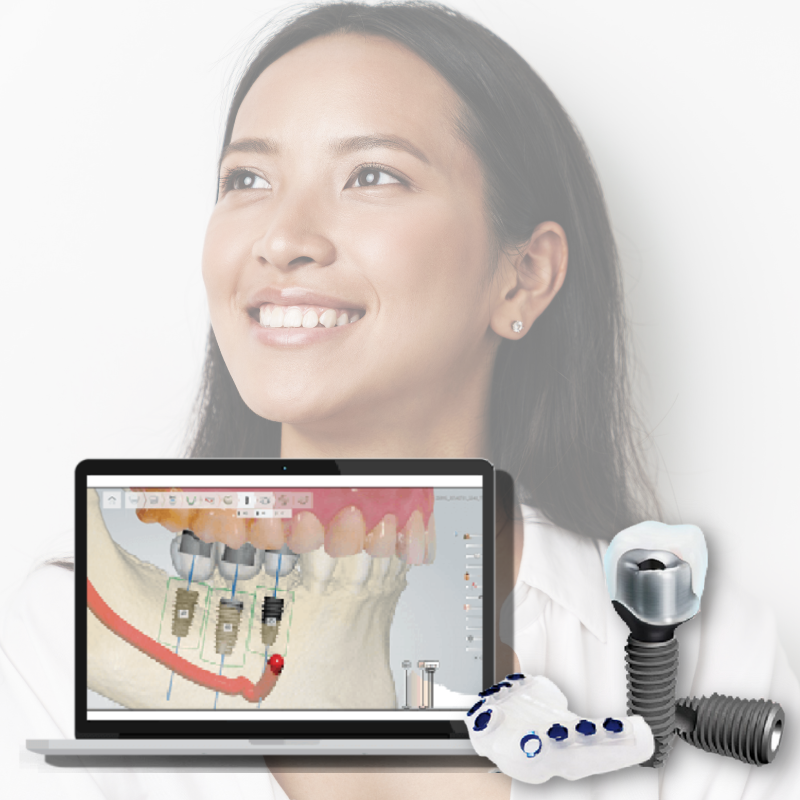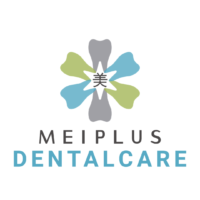Digital Guided Dental Implants
Dentistry is improving as well as technology.Dentists from all fields of dentistry have access to digital technology including cosmetic and general dentistry, implant dentistry, and more.The development of dental technology has allowed patients to receive modern solutions to traditional dental problems.The roots of each tooth are hidden in the jawbone and the crowns are visible in the mouth.In many cases, non-functioning or faulty teeth require dental implants to be replaced. This can be done for a variety of reasons.
Digital Guided Implant
Process
A procedure personalized just for you
- Oral examination, full X-ray and CT scan
- Dentist’s Consultation
- 3D Simulation
- Placement of your implant
- Temporary crowns placement
- Your final full ceramic crown or bridge placement with custmozied abutment

What are digital guided Dental Implants?
Similar to conventional dental implants digital guided dental implants are titanium screws that are cylindrical in shape. It consists of two parts implant itself that acts as a root and the crown, which is placed on the top of it so that it performs the functions of the natural tooth. The material of the dental implants is biocompatible and placed surgically into the jawbone in place of a missing tooth. Dental Implant is a restorative option to replace non-functional, missing, or severely decayed teeth. Dental implants help to maintain face shape and prevent bone degradation caused by missing teeth. People are regaining the comfort and confidence to eat, speak, laugh, and enjoy life thanks to dental implants. Digital guided dental implants are biocompatible screws that act as roots of the tooth and a crown is then placed on the top of it that performs the functions of the tooth. This screw and crown are formed using digital technologies such as CAD/CAM and are surgically fixed into the jawbone.
Digital guided implant surgery
Three dimensional computer simulation is used to examine the bone health and nerve position during digital guided implant surgery. A dentist will be able to assess the health of the treatment area and plan surgery with few incisions using this information. In comparison to traditional implant surgery, there is substantially less discomfort with digital implant surgery because it focuses on making the smallest incision feasible. During the dental implant treatment, a guide is placed over the teeth to ensure that no nerves or teeth are damaged. Also, the guide is helpful to dentists in making tiny incisions for implants.
The Advantages of Digitally Guided Implants
Digital guided implants can make better visualization of key anatomical features can be achieved. Traditional surgical guides, on the other hand, can produce a predictable outcome but are more difficult to employ, especially in the absence of any anatomical references. Before surgery, detailed treatment planning can help to avoid or eliminate unexpected events. Digital guided implant surgery is less invasive and less bleeding possible. No sutures are required as it precisely cuts the necessary hard and soft tissue. Moreover, the time it takes to do implant surgery can often be significantly decreased, which is beneficial to the patient.
Is digital guided dental implants are more comfortable than other dental implants?
With traditional dental implants, the gum must be cut along the whole length of where the implants will be placed. This is why a growing number of people are opting for digital guided implants. Because 3DCT scans are used to assess the bone state and nerve position, digital implant surgery requires a little incision. Traditional dental implant surgery, on the other hand, necessitates a wide incision down the length of your gums to the bone which can be painful for most patients during the healing phase.
Maintenance
It is important to consider that maintenance of digital guided dental implants is necessary. Implants are precious and do require regular follow-up visits and clinical maintenance. Clinical management, as well as home management, is crucial. Oral hygiene regimens (brushing 3 times with correct techniques and flossing) must be followed religiously to keep the oral cavity bacteria and plaque-free. Incorporate super floss and interdental brushes as part of the oral hygiene regimen if required. The plaque and bacteria destroy soft and hard tissues within the oral cavity by producing inflammatory processes around and beneath the implant, making it lose and weak. It is, therefore, crucial to keep the teeth clean regularly.
About Our Team
Meet Our Dentists from Korea, USA, UK, Aus and Singapore.

Dr. Kim Taeyun
DDS Columbia Univ. (NY, USA)

Dr. Winston How
BDS NUS

Dr. Bak Junbeom
BDS King's College London (UK)

Dr. Leem Jae Hoon
BDSc Melbourne Univ.
At Meiplus Dentalcare, we will be more than happy to answer any questions you may have about digital guided dental implants.


Dental Implant FAQ
Are dental implants for everyone?
In most cases, anyone healthy enough to undergo a routine dental extraction or oral surgery can be considered for a dental implant. Patients should have healthy gums and enough bone to hold the implant. Also, they must be committed to good oral hygiene and regular dental visits.
Does it hurt undergoing an implant procedure?
All of this drilling and screwing may sound painful, but you’ll be comforted to know that placing an implant is easier than taking a tooth out. Usually a local anesthetic is used, which means you are awake during the surgery.
You shouldn’t feel any pain during the surgery, especially if it is done with healthy tissue. Also, the bone where the implant is placed does not have many pain-sensing nerves. But if you’re very nervous about the surgery, you have sedative options to make you more comfortable during the operation.
How long do dental implants last?
Dental implants can last a lifetime. The crown that goes on top may need replacing after 10 to 15 years through wear and tear.
Can diabetics have dental implants?
The use of dental implants in diabetic patients is controversial. It is generally accepted that the patients with controlled diabetes can have dental implants and have similar success rate as in healthy individuals.
How long does the implant procedure take?
The Implant Process It will take approximately one hour per implant. Your next appointment will be two to threemonths later. The dentist will decide whether your implant is ready to receive the crown that complete the process
Can I use my Medisave claims?
Singapore residents who wish to receive treatment overseas will be able to use their own or their spouse, children, parents, grandchildren and siblings’ MediSave Account (MA) savings to pay for their inpatient hospitalisation or day surgery under the MediSave scheme if they fulfil all the following conditions:
- 1. The patient must be a Singapore Citizen or Permanent Resident of Singapore.
- 2. The patient is normally residing1 in Singapore.
- 3. The patient is being referred through a MediSave-accredited institution/referral centre in Singapore.
You can use MediSave to pay for your dental implant insertion or removal as long as it is a surgical procedure.
For a dental surgery with insertion or removal of dental implants, you can use MediSave to pay for your dental implants, up to the following limits:
| Insertion of Dental Implants | Number of implant(s) inserted x $950 Operation limit of Table 2C |
| Removal of Dental Implants | Number of implant(s) removed x $450 Operation limit of Table 1C |
For example, if you have to insert two dental implants, you can use up to $1,900 (2 x $950) for payment of your dental implants.
Do I need to pay my treatment fees at once?
We are pleased to accept installment plans. Please contact us for more details.
Tg Pagar
Operation hours
Mon / Wed / Fri 9am - 6pm Tue / Thu 9am - 8pm Sat 9am - 4pm Sun / PH Close
Locations
Blk1 Tanjong Pagar Plaza #02-24 SG082001
Enquiry
9787 1209 / meiplus@meiplus.com.sg

Tg Pagar
Operation hours
Mon / Wed / Fri 9am - 6pm Tue / Thu 9am - 8pm Sat 9am - 4pm Sun / PH Close
Locations
Blk1 Tanjong Pagar Plaza #02-24 SG082001
Enquiry
9787 1209 / meiplus@meiplus.com.sg

Marine Parade
Operation hours
Mon / Wed / Fri 9:30am - 6:30pm Tue / Thu 9:30am - 8:30pm Sat 9am - 4pm Sun / PH Close
Locations
141 East Coast Road SG428831
Enquiry
8837 5481 / meiplusmp@meiplus.com.sg

